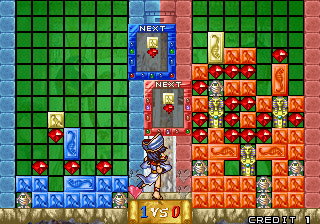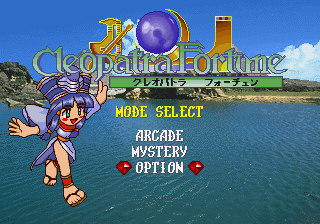Puzzle games!
They made quite a few of them!
And here's another one!














|
|
 School Uniform |
 School Uniform w/ Glasses |
|
 White Swimsuit |
 Bunny Girl Waitress |
![You may be wondering, 'Hey, how do you know this is a ~school~ swimsuit specifically? The clue is the name tag across the chest. You see, I've watched a LOT of anime, and-
[Aaaaaaand we're gonna cut that off there. You'll thank me later. - Ed]](images/cleoft/cleoftcosplayssb.png) School Swimsuit |


 * The green banner with Japanese text underneath the title screen
* The green banner with Japanese text underneath the title screen * The bouncing text and numbers that appear after you create a chain reaction
* The bouncing text and numbers that appear after you create a chain reaction * The mini-tutorial that appears after you start a game on Easy
* The mini-tutorial that appears after you start a game on Easy * This text box that appears when a Pyramid item is spawned
* This text box that appears when a Pyramid item is spawned * The Congratulations picture used for the second/one-credit ending (it uses the one from the standard ending instead)
* The Congratulations picture used for the second/one-credit ending (it uses the one from the standard ending instead)




































